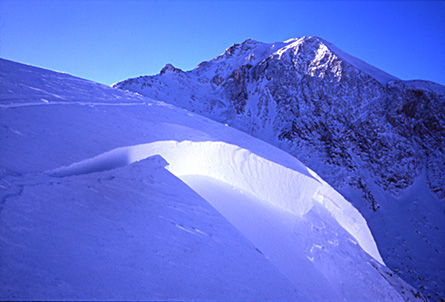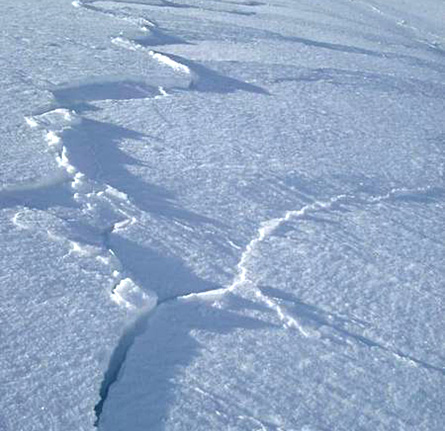- More than 2 years ago
Forecasting a snow avalanche takes more than measuring the angle of a mountain slope, researchers report in the July 11 Science. Whether an avalanche happens might also depend on how the snow cracks and collapses, the study suggests.


“The new theory could be a breakthrough in understanding what is going on at the very moment when an avalanche begins,” says University of Edinburgh physicist Joachim Heierli, lead author of the study. It “gives hints on what snow properties to look for to anticipate the risk of triggering a slab avalanche.”
Slab avalanches are the most common and most dangerous because a slab of snow breaks loose and cascades to the slope’s bottom. By modeling this avalanche type the team found that snow fractures much more easily than previously thought. Also, friction between snow layers may be more important in avalanche dynamics than once thought.
“Friction may not stop the fracture from spreading but may stop the avalanche,” Heierli says.
Also, gravity pulling down along the slope is less important than the compression of the snow, the team reports.
In a snow pile, a brittle, collapsible layer sits between a solid, dense snow slab on top and a rigid snow base below. The way the brittle, middle snow layer fractures when it’s disturbed controls whether a snow pile will shear off leading to a violent slab avalanche or will collapse under its own weight.
Scientists had previously thought that slab avalanches start when shear cracks along the brittle, middle layer of a snowpack spread and that the angle of the slope, and therefore the gravity tugging on the slope, would drive the avalanche.
According to this argument, says Heierli, the critical crack size to start an avalanche should increase as the slope angle decreases. But recent field experiments done by other researchers on snowpacks in Canada showed instead that, in general, the size of the crack in the brittle, middle layer required to start an avalanche increased or remained constant as slope angles increased.
Heierli’s team tried to address this discrepancy between the experiments and the theory of slab avalanche triggers by modeling both the gravitational tug on the snow along the slope angle and the downward pull of gravity perpendicular to the slope, finding the perpendicular pull was more important.
“Some layers inside the snow are a very frail network of ice grains with lots of space in between,” Heierli says. “Some arrangements may crumble like a house of cards because some grains or fragments fall into the space between other ice grains. Then a cavity forms between the two layers.”
Modeling the development of these cavities, or “anticracks,” led the team to conclude that fractures caused by snow crumbling can spread over large areas and create an avalanche similar to what was seen in the most recent field experiments, the study reports.
“This research is really an entirely new paradigm for how the fractures that result in snow avalanches work,” says Karl Birkeland, a scientist with the U.S. Forest Service’s NationalAvalancheCenter. “And, these findings better fit with what we observe about avalanches in the field.”
The new findings also suggest that horizontal snow layers can fracture more easily than once thought and that there is no measured, minimum slope angle to start a snow slide.
“If moving over a flat snow cover, you may trigger a remote avalanche on the hill above you making it come down on you or others,” Heierli says. “Experienced backcountry skiers know this already, but now they may better understand how it can happen.”
Birkeland notes that the new model offers a new way to think about how avalanches are triggered and might lead to better tests for predicting snow slides in the field.






